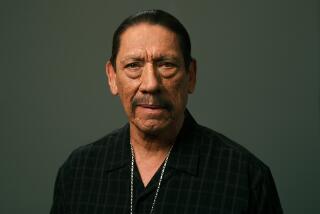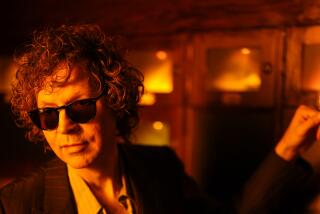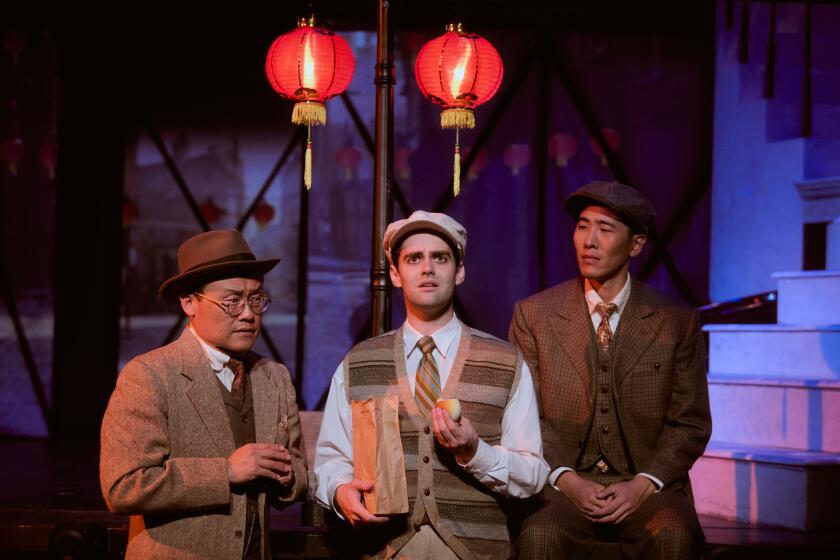Plans for Art Facility Told
A major research and study facility for art of the late 1970s, the 1980s and, eventually, the 1990s will open in Santa Monica sometime this fall under the sponsorship of the Eli Broad Family Foundation.
The facility for the most contemporary works of art will be located in a remodeled 1927 telephone switching station and will be open to scholars, museum professionals, artists, writers and critics--but not to the public.
“We don’t want to compete with museums,” said Eli Broad, director of the foundation and founder and chief executive officer of Kaufman & Broad Inc.
Instead, he sees the facility--which “will have no name as such”--as “an oasis for the study of art” and the vehicle for keeping accessible that art, which in an ever-escalating market may be priced too high, even for museums.
Established in 1984, the Broad foundation is dedicated to the acquisition, study and presentation of works by artists who first started to achieve prominence in the last 25 years of this century. The collection currently numbers more than 300 works by about 60 artists, including Robert Morris, David Salle, Julian Schnabel and Judy Rifka. However, according to Broad, only 80 to 100 works would be viewable at any one time in the four-story building, located at 3355 Barnard Way.
In announcing expansion of the foundation’s activities, Broad noted:
“In the current art environment, we find that new art rapidly disappears into private collections and collectors are becoming more and more reluctant to loan new works. Museums are facing ever-increasing operating costs coupled with declining government support, thus reducing acquisition budgets. Moreover, those museums that are able to collect new works often don’t have the space to display them.
“The end result,” Broad said, “is that both the art professional and the public are, in large part, denied the opportunity to experience and study new art. The foundation, in creating this oasis for the study of art, and through its active program of lending works in its collection to public institutions, will address the current problem of keeping contemporary art accessible.”
Meanwhile, Broad said, the foundation will continue its policy of serving as “a lending library” to museums. The foundation has loaned works to more than 60 institutions. At present, the Museum of Contemporary Art has about a half-dozen of the foundation’s works on loan.
The foundation is also developing a publications program designed to encourage writing and criticism on the art of the 1980s and 1990s.
In an interview, Broad strongly hinted that he would eventually let the collection go public.
“By the year 2,000, I will be 66 years of age, and at that time I will either merge (the collection) into a public institution or give it to one of several museums. Our foundation’s charge is education and to get people interested in contemporary art.”
Asked why he did not simply turn over the collection to MOCA, Broad--the founding chairman of MOCA’s board of trustees and a key negotiator in the deal that brought the collection of Giuseppe Panza di Biumo to the museum--replied, “Because I wanted to make it accessible to lots of institutions including MOCA, and MOCA doesn’t have the wall space.”
Richard Koshalek, MOCA’s director, said the new facility “will continue to cooperate with MOCA in an extensive manner. . . . Our facilities are going to complement each other.”
Indeed, on Wednesday Broad provided foundation funds to purchase two mixed-media installations by Louise Lawler and Vito Acconci for MOCA’s permanent collection.
According to curator Michele D. De Angelus, the Broad facility may be the first of its kind in the nation. “There are other similar (facilities) but nothing quite like this in the States that I know of,” De Angelus said. “There are private collections made accessible to scholars and curators, like the Krex collection in Switzerland and the (Charles) Saatchi collection in London. Certainly private foundations form collections which they lend, but they don’t have a study center where scholars can study and work.”
The terra cotta and brick facility in Santa Monica is currently being refurbished to provide administrative offices, exhibition and open storage space, an art library and study facilities. Frederick Fisher of Los Angeles is the architect.
The structure, which has ceiling heights of 16 to 18 feet, is a block from the ocean. “It will have a lot of light,” Broad said.
In addition to the foundation, Broad has a personal collection that he and his wife Edye have acquired over the past 15 years, numbering about 250 works of modern and contemporary art. And there is a corporate collection of 600 works of art by Southern California artists, “all young artists,” Broad said.
Santa Monica is also the home of the Getty Center for the History of the Art and Humanities at 401 Wilshire Blvd. The center is an advanced research institute “intended to foster the exchange of knowledge and ideas in art history and ideas.”
While no works of art are on display, the center houses photo and library archives. There are more than a million photographs and a half-million volumes depicting and describing works that date from Greek and Roman antiquities to 20th-Century works. “Nothing real contemporary,” a spokeswoman said, “not much beyond the German Expressionists of the 1920s.”
More to Read
The biggest entertainment stories
Get our big stories about Hollywood, film, television, music, arts, culture and more right in your inbox as soon as they publish.
You may occasionally receive promotional content from the Los Angeles Times.






